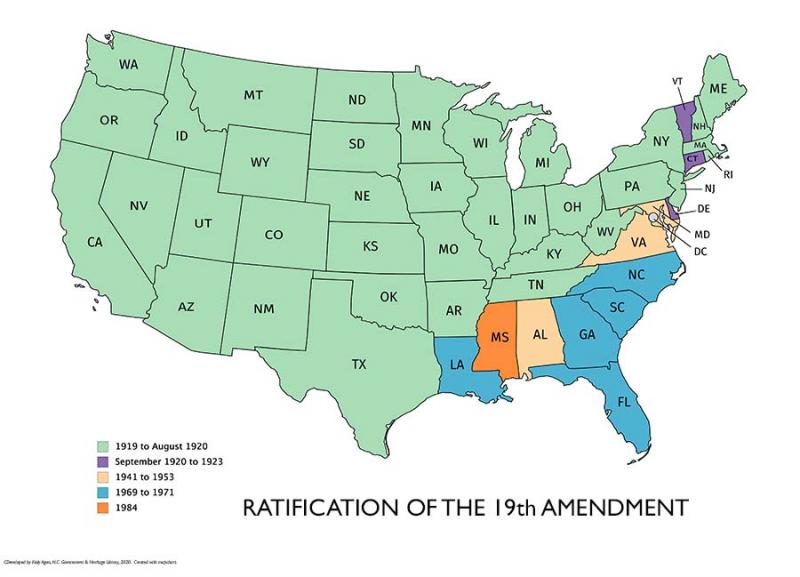Not everyone supported the Amendments of 1835. They were put to a vote of all eligible voters in the state -- "all freemen of the age of twenty-one Years, who... have paid public taxes," according to the Constitution of 1776 -- and the results were 26,771 for the amendments and 21,606 against, or 55.3 percent for and 44.7 percent against. Although the amendments were adopted by a fairly close margin, support for them wasn't evenly spread out through the state. In each of the counties below, the vote was overwhelmingly one way or the other.
|
County |
For |
Against |
|---|---|---|
|
Brunswick |
0 |
466 |
|
Buncombe |
1,322 |
22 |
|
Burke |
1,359 |
1 |
|
Craven |
131 |
270 |
|
Edgecombe |
29 |
1,334 |
|
Hyde |
2 |
431 |
|
Iredell |
1,184 |
18 |
|
Lincoln |
1,887 |
42 |
|
Martin |
14 |
795 |
|
Orange |
1,131 |
246 |
|
Rowan |
1,570 |
18 |
|
Rutherfordton |
1,557 |
8 |
|
Tyrrell |
1 |
459 |
|
Wake |
243 |
1,124 |
|
Warren |
46 |
580 |
|
Washington |
14 |
409 |
|
Wilkes |
1,757 |
8 |
Activity
- Find each of the counties listed in the data table on the map at the top of the page. (Click the map to see the full-sized version.) The simplest way to keep track of the counties is to print off a copy of the map, and to use crayons or markers to color them as you find them, using two different colors for counties voting for and counties voting against.
- Once you've colored in the counties, the pattern of voting should be obvious. Does this surprise you? Given what you've read, why would people in different parts of the state have supported or opposed the amendments?
- 1. Data from Henry G. Connor, The Convention of 1835 (Raleigh: Edwards & Broughton, 1908), p. 23.
